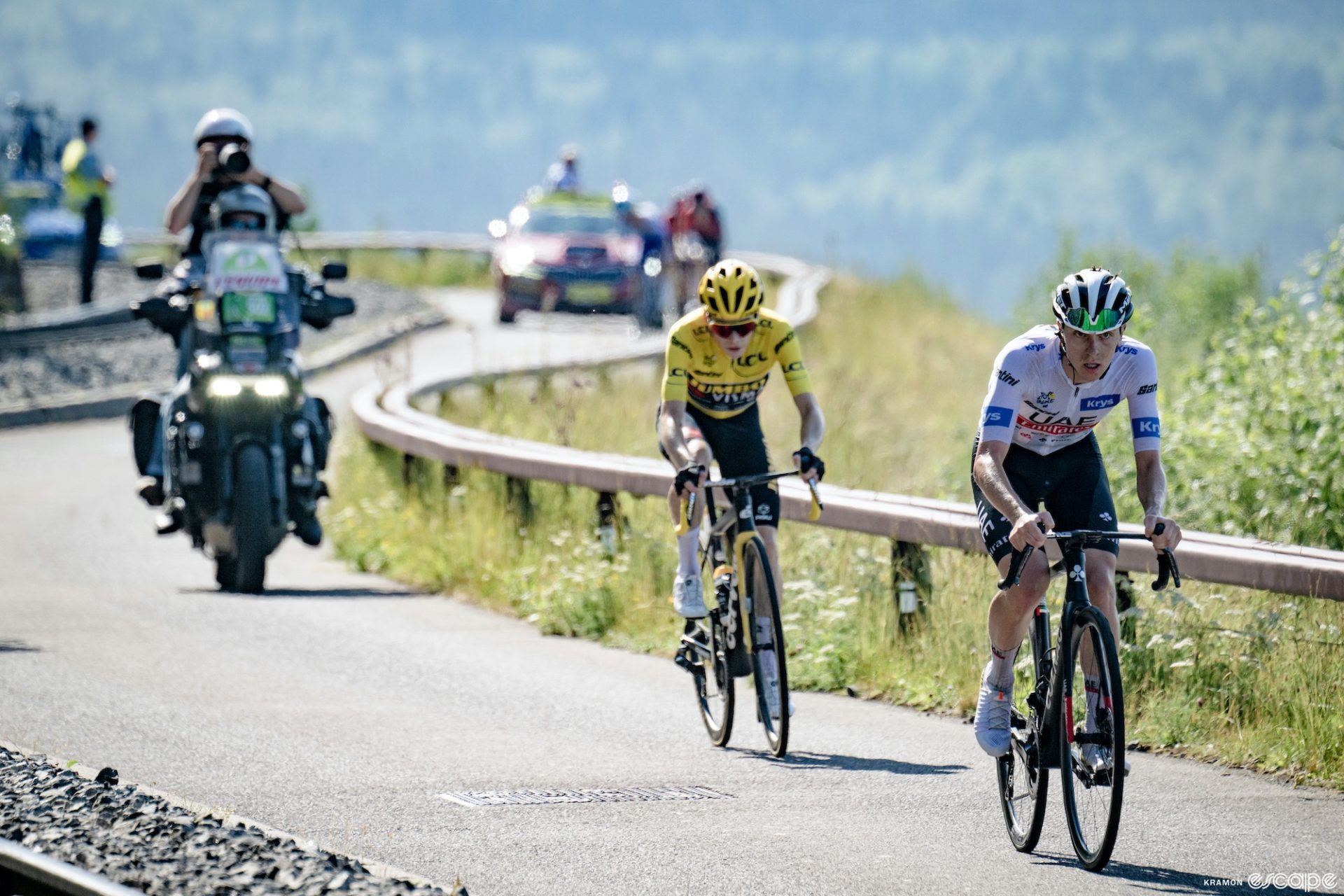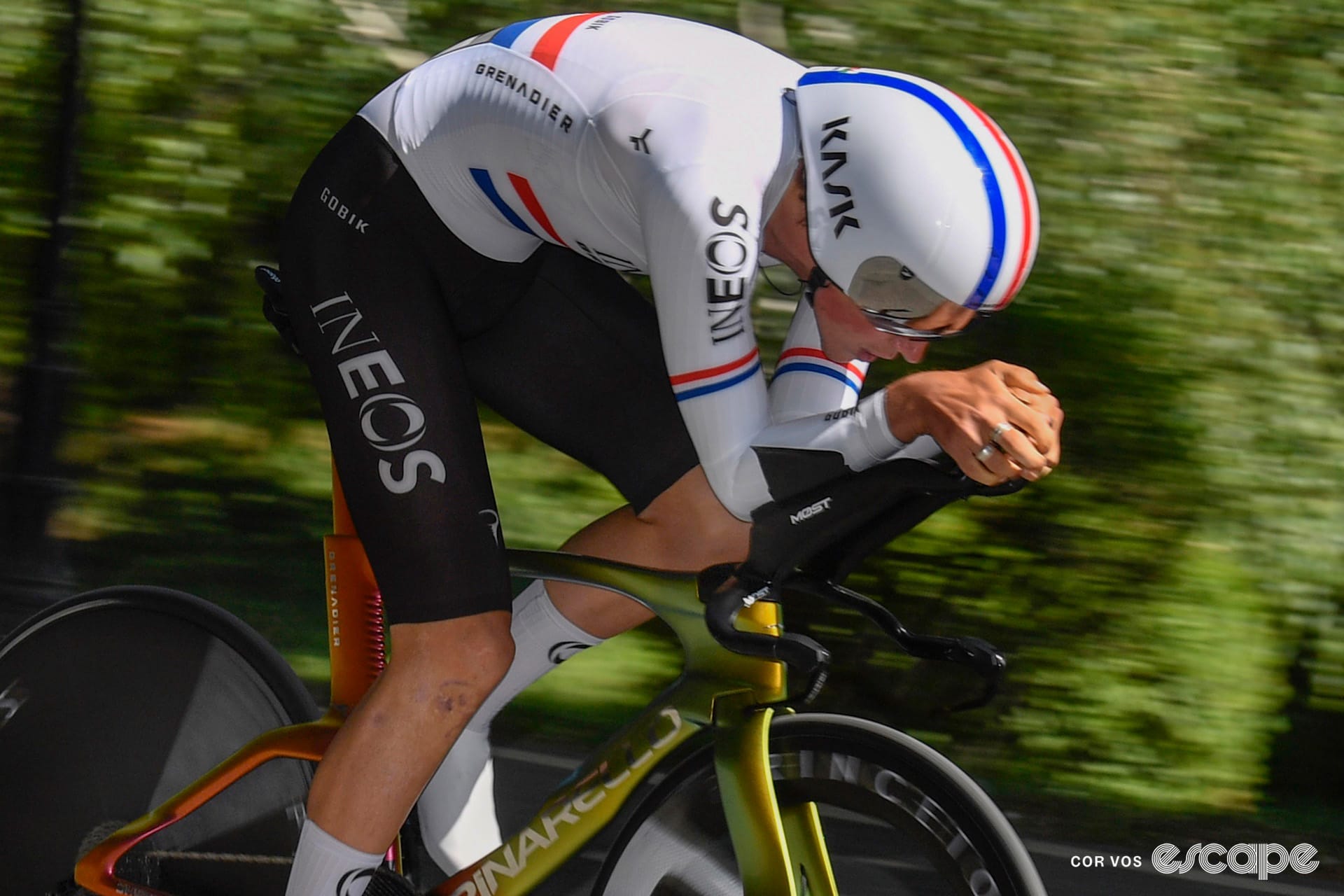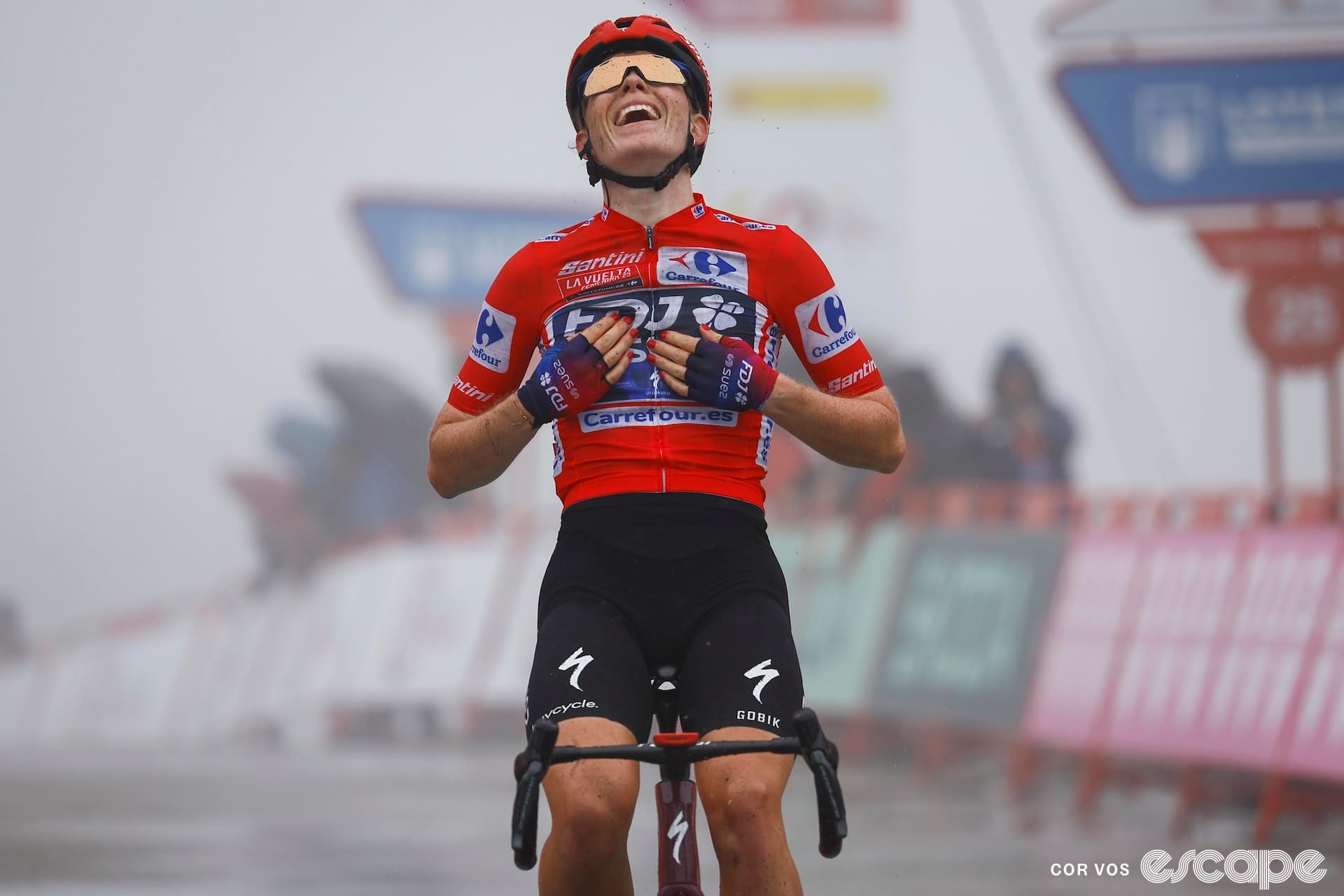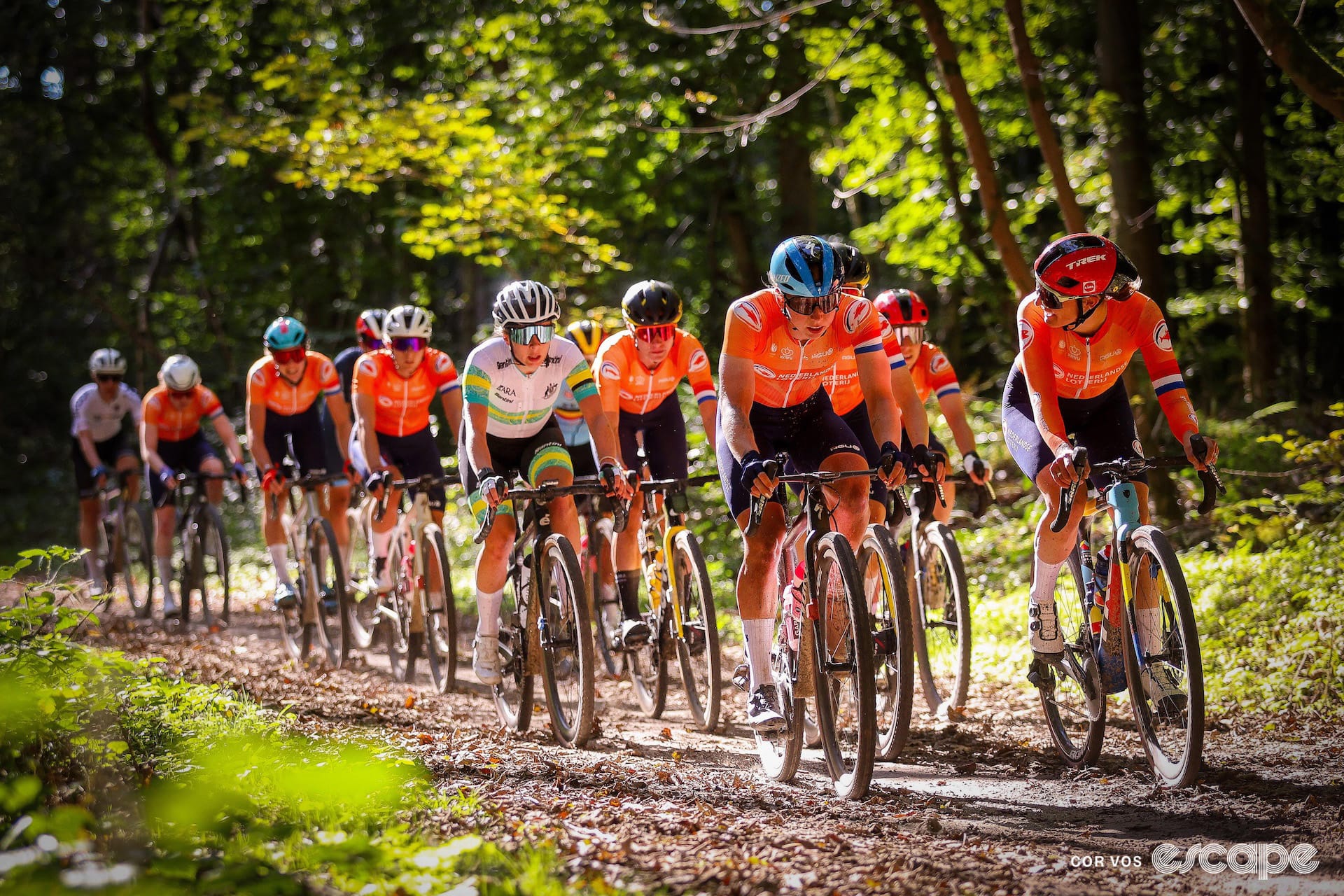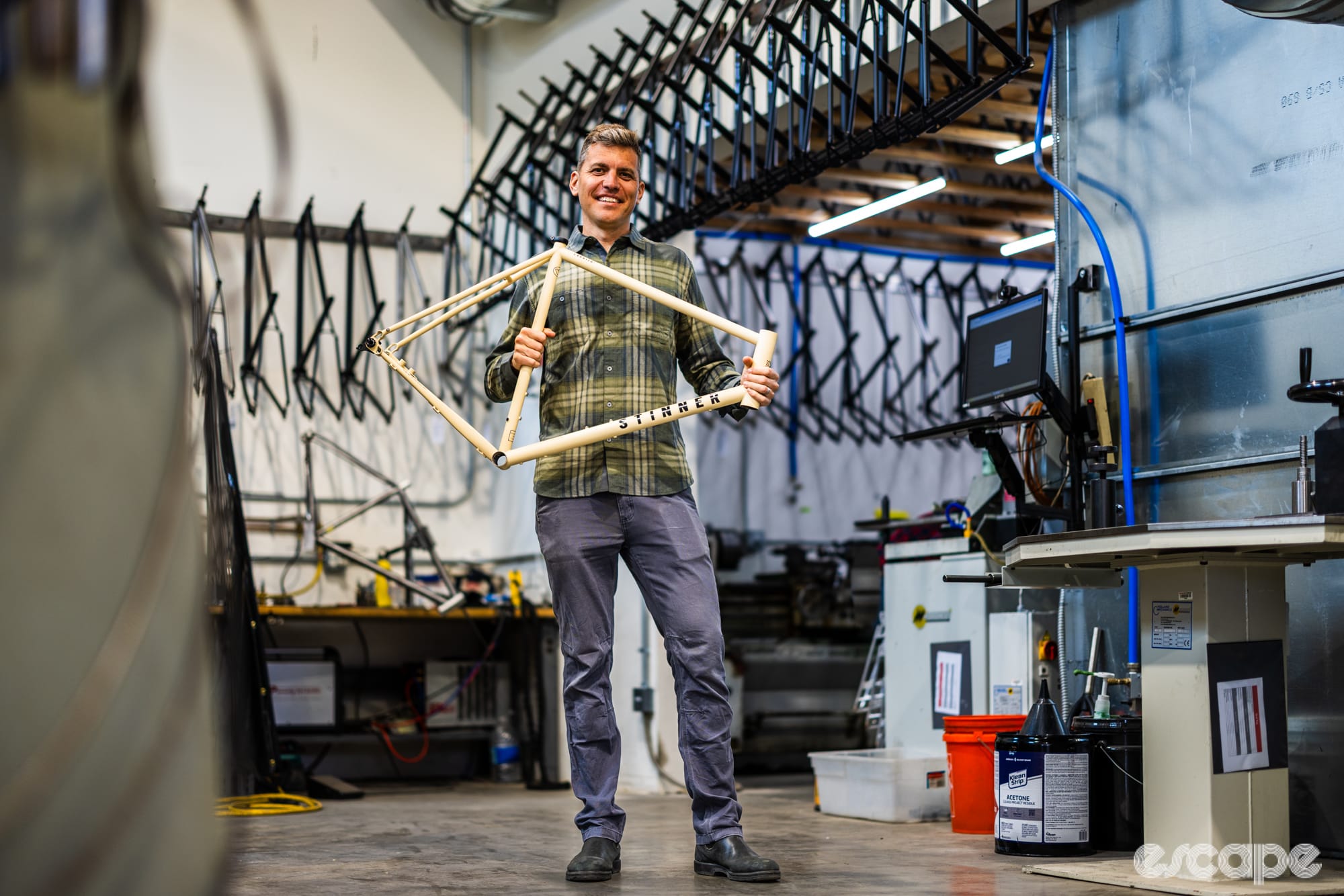The Tour's first rest day has given riders and fans alike a chance to take a breather, but it can only last so long. Racing resumes on Tuesday as we start "week two" (insofar as a Grand Tour week can actually last more or less than a normal week) of the 2023 Tour de France, and there should be plenty of action on tap.
Here's what's coming up in week two of the Tour de France:
Things will kick off with a stage 10 that is tailor-made for the break. The trek from Vulcania to Issoire will take the peloton 167 km over five caegorized climbs, none of them especially difficult, but with basically no flat roads all day. Things finish on a downhill as well. It will be difficult for the peloton to control and there are only so many teams that would be interested in doing so anyway, so it should be a great day for picking up King of the Mountains points and grabbing a stage win out front, while Jonas Vingegaard, Tadej Pogačar, and the rest of the GC riders will get at least a bit of fatigue put into the legs.
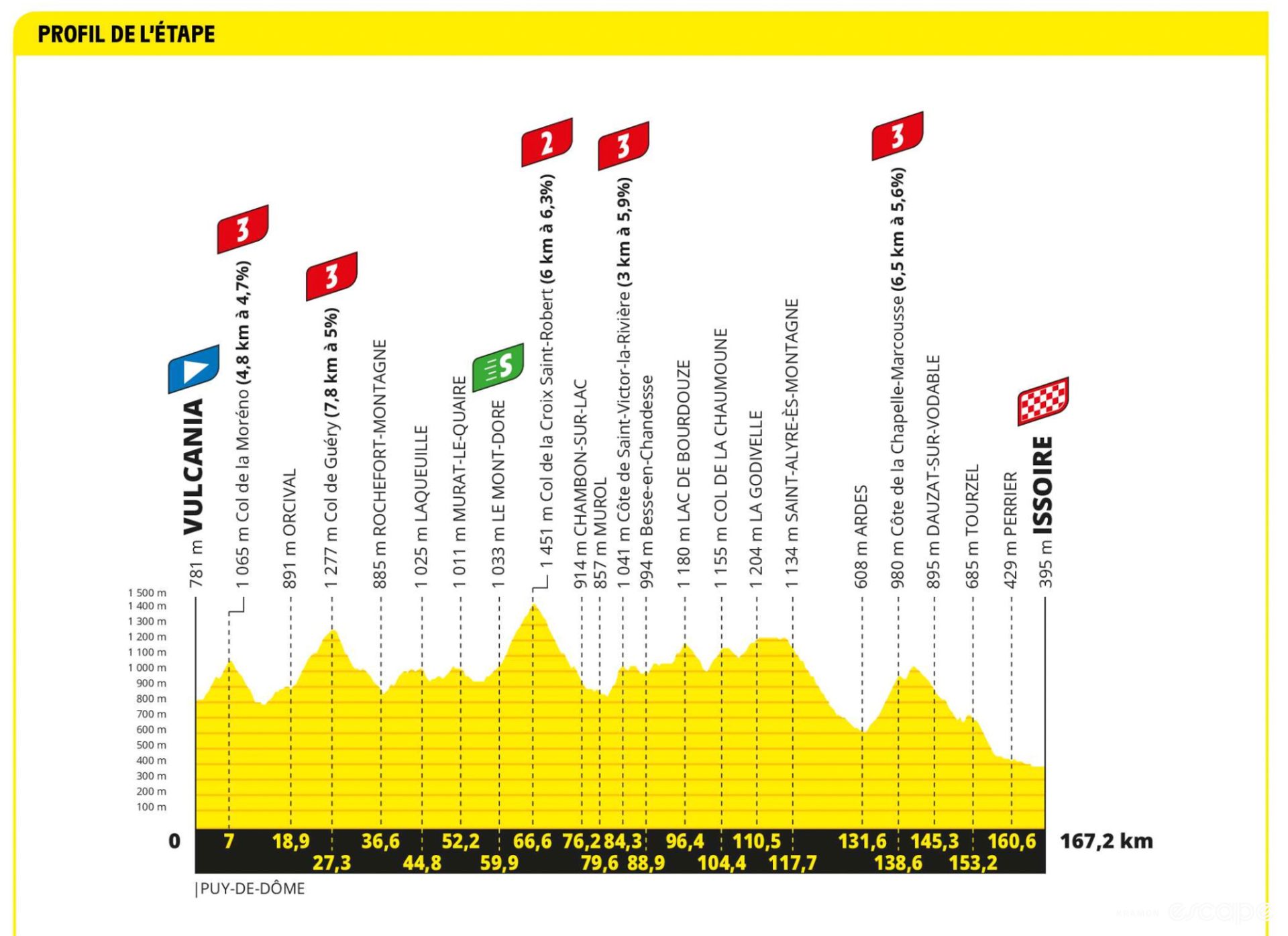
Fortunately for those GC riders, stage 11 is relatively easy, 180 kilometers from Clermont-Ferrand (still!) to Moulins ("Mills"). It should be a day for the sprinters, and thus another day for Jasper Philipsen.
Another great breakaway day follows that, with enough late climbing that it might otherwise spur a certain someone with a Liège-Bastogne-Liège title on his palmarès to attempt an attack. That said, the rider in question will probably keep his powder dry with some very difficult stages ahead. We can hope, but it would be a surprise if any of the GC hopefuls tried anything here. Then again, GC riders on a bad day could actually lose some time here if the stage is ridden hard.
I decided to use a booze-adjacent title for this piece, so I'll build on that by suggesting that you toast the stage 12 winner's success with a regionally relevant Beaujolais wine, made from the Gamay grape that tends to please fans of Pinot Noir. If you want more of this sort of thing, make sure to tune in either to the Tour de France Daily Podcast or this website for José Been's cultural notes at this Tour de France!
Stage 13 is where things will get really challenging, and they won't let up for a while either. The Bastille Day battle will be a short but difficult one: It's just 137.8 km but it ends with the massive Grand Colombier, 17.4 km at 7.1%. The very end of the climb is steep enough that even if the GC hopefuls ride conservatively, time gaps are likely.
If you miss that action on Friday, there should be plenty to come throughout the weekend. Stage 14 looks like a real doozy.
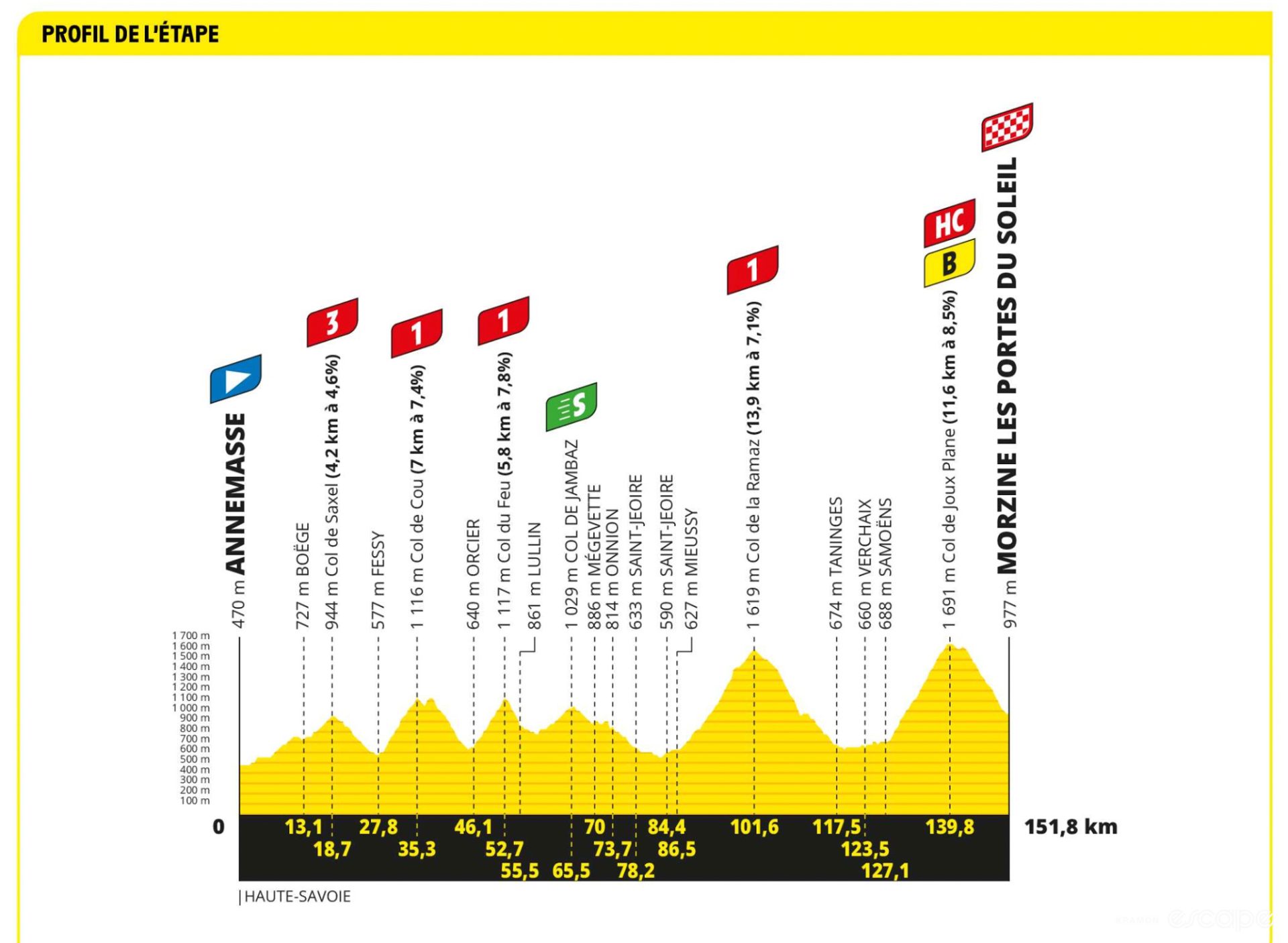
The breakaway battle will be fierce with some early steep pitches, and then the Col de la Ramaz will be a serious challenge just to start off the final third of the stage. The real action may come on the very steep Col de Joux Plane. The stage won't finish at the top, however, with a descent to the finish to follow. The stage win could be for the break, but the GC riders will absolutely be involved in some action.
Sunday's stage 15, one week after the Tour went up the Puy de Dôme, will be one final test before the second rest day. It's an interesting profile where none of the individual climbs look all that terrifying, but all told, it will be a very hard day. The finale is particularly interesting here.

Officially, the stage ends with the one-two punch of the second-category Côte des Amerands into the first-category climb to Saint-Gervais Mont-Blanc, but it should take riders less than a minute to go from the "top" of the first climb to the "bottom" of the second. Really, it's more like a single 10-km climb with an average gradient nearing double digits. With a rest day to follow, we should see some fireworks here, possibly in two different places as a break may battle for the stage win ahead of the GC riders.
The "first week" had sprint stages interspersed between some of the harder mountain days, but here in the "second week," we get three challenging stages in a row. That could lead to more muted GC racing, but it could also impact the yellow jersey hopefuls in a way we haven't seen yet. Vingegaard and Pogačar, separated by just 17 seconds on overall time, will have to be at their best over and over and over again, and that will be after an already challenging Tour.
In other words, it wouldn't be hugely surprising if the stages ahead see less aggressive racing than we might otherwise want, but at the same time, it also wouldn't be hugely surprising to see some big names crack after accumulating so much fatigue.
Did we do a good job with this story?

